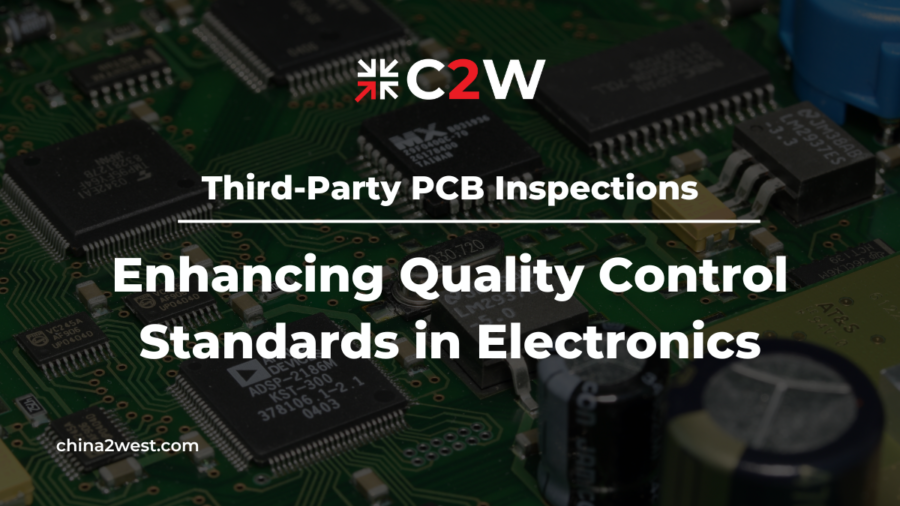In today’s fast-paced world, electronic devices have become an integral part of our daily lives. From smartphones to household appliances, these devices rely on printed circuit boards (PCBs) to function efficiently. However, ensuring the quality and reliability of these PCBs is crucial, as any defects or malfunctions can have serious consequences. This is where third-party PCB inspections come into play. These inspections are an essential part of quality control standards in electronics, providing an unbiased and thorough evaluation of the PCB manufacturing process. Let’s take a closer look at the significance of third-party PCB inspections and how they contribute to maintaining high-quality standards in the electronics industry.
What is PCB?
PCB stands for Printed Circuit Board. It is a board made of insulating material, such as fiberglass, with conductive pathways etched or “printed” onto the board. These conductive pathways allow for the easy flow of electricity between various components, such as resistors, capacitors, and integrated circuits, that are mounted on the board. PCBs are widely used in electronic devices and are a fundamental part of modern electronics.
The process of creating a PCB involves designing the circuit layout using specialized software, and then producing the actual board through a series of manufacturing steps. PCBs are essential in the construction of electronic devices ranging from simple consumer electronics like smartphones and computers to more complex systems like medical equipment and industrial machinery. They provide a compact and organized way to interconnect electronic components, improving the reliability and efficiency of electronic circuits.
Role of Quality Control in PCB Manufacturing
Quality control plays a crucial role in ensuring the reliability and functionality of printed circuit boards (PCBs) during the manufacturing process. PCBs are at the heart of electronic devices, and any defects or malfunctions in these boards can have serious consequences.
PCB manufacturing involves multiple complex steps, including designing, prototyping, fabrication, and assembly. At each stage, there is a potential for errors or defects to occur. Without proper quality control measures, these issues can go undetected and result in faulty PCBs.
The role of quality control is to identify and address any issues in the PCB manufacturing process, ensuring that the final product meets the necessary standards. Quality control involves comprehensive inspections and tests at various stages of production, from raw materials to finished PCBs.
By implementing effective quality control measures, manufacturers can identify and rectify any problems early on, reducing the chances of defective PCBs reaching the market. This helps in minimizing the risks associated with faulty electronic devices, such as electrical hazards, performance issues, or even product recalls.
An In-depth Look at Third-Party PCB Inspections
Third-party PCB inspections provide a comprehensive and unbiased evaluation of the PCB manufacturing process. These inspections are conducted by independent companies or organizations that specialize in quality control and have no affiliation with the PCB manufacturer.
During a third-party inspection, experienced professionals thoroughly examine each stage of the manufacturing process, from design to assembly, to identify any potential issues or defects. They evaluate factors such as the quality of materials used, adherence to industry standards and regulations, and the overall functionality of the PCBs.
One of the key advantages of third-party inspections is that they offer an unbiased perspective. Since these inspections are conducted by external entities, they are not influenced by any internal pressures or biases that may exist within the manufacturing company. This ensures that the inspection results are objective and accurate.
Additionally, third-party inspections provide an extra layer of quality control and assurance. By involving an independent party in the inspection process, manufacturers can validate the reliability and performance of their PCBs. This not only helps in identifying and rectifying any issues before the final product reaches the market but also instills confidence in customers and stakeholders regarding the quality of the electronic devices.
Process of Choosing a Third-party PCB Inspector in China
Selecting a reliable third-party Printed Circuit Board (PCB) inspector is a crucial step in ensuring the quality and reliability of electronic components. PCBs are the backbone of electronic devices, and defects or issues can lead to malfunctions, performance issues, or even safety hazards. Here’s a brief guide to help you navigate the process of choosing a third-party PCB inspector:
1. Define Your Requirements
Begin by clearly defining your inspection requirements. Consider the complexity of your PCBs, the industry standards you need to adhere to, and any specific quality criteria. Knowing your requirements will help you find an inspector with the expertise and capabilities to meet your needs.
2. Experience and Expertise
Evaluate the inspector’s experience in PCB inspection and their expertise in handling diverse technologies and industry-specific requirements. An experienced inspector is more likely to identify potential issues and provide effective solutions.
3. Inspection Methods and Equipment
Inquire about the inspection methods and equipment used by the third-party inspector. Modern inspection techniques, such as automated optical inspection (AOI) and X-ray inspection, can provide comprehensive and accurate results. Ensure that the inspector’s methods align with your quality standards.
4. Cost and Timelines
Consider the cost of inspection services and the estimated timelines for completing the inspection. While cost is an important factor, it should be balanced with the inspector’s reputation and the quality of their services. Timely inspections are crucial to maintaining production schedules.
5. Communication and Reporting:
Effective communication is key during the inspection process. Ensure that the inspector provides clear and detailed reports, highlighting any issues found and suggesting corrective actions. Transparent communication helps you make informed decisions about the quality of your PCBs.
In conclusion, third-party PCB inspections play a pivotal role in enhancing quality control standards in the field of electronics. By outsourcing inspections to independent experts, you can benefit from a fresh perspective and specialized knowledge, identifying potential issues that might go unnoticed in an in-house quality control process. This not only improves the overall reliability of electronic devices but also helps in preventing costly recalls and reputational damage.
If you are interested in learning more about how a third-party inspection company can help with your project, reach out to our team at China 2 West today.




